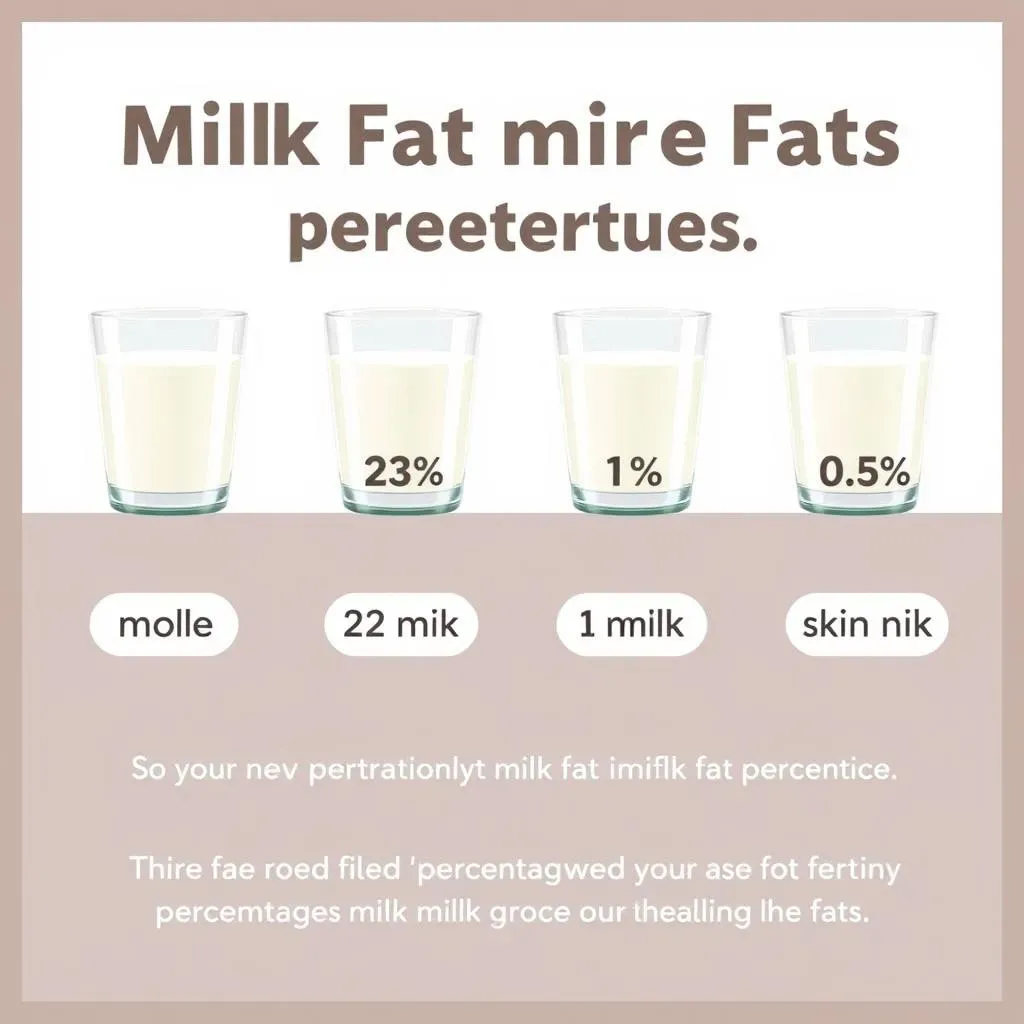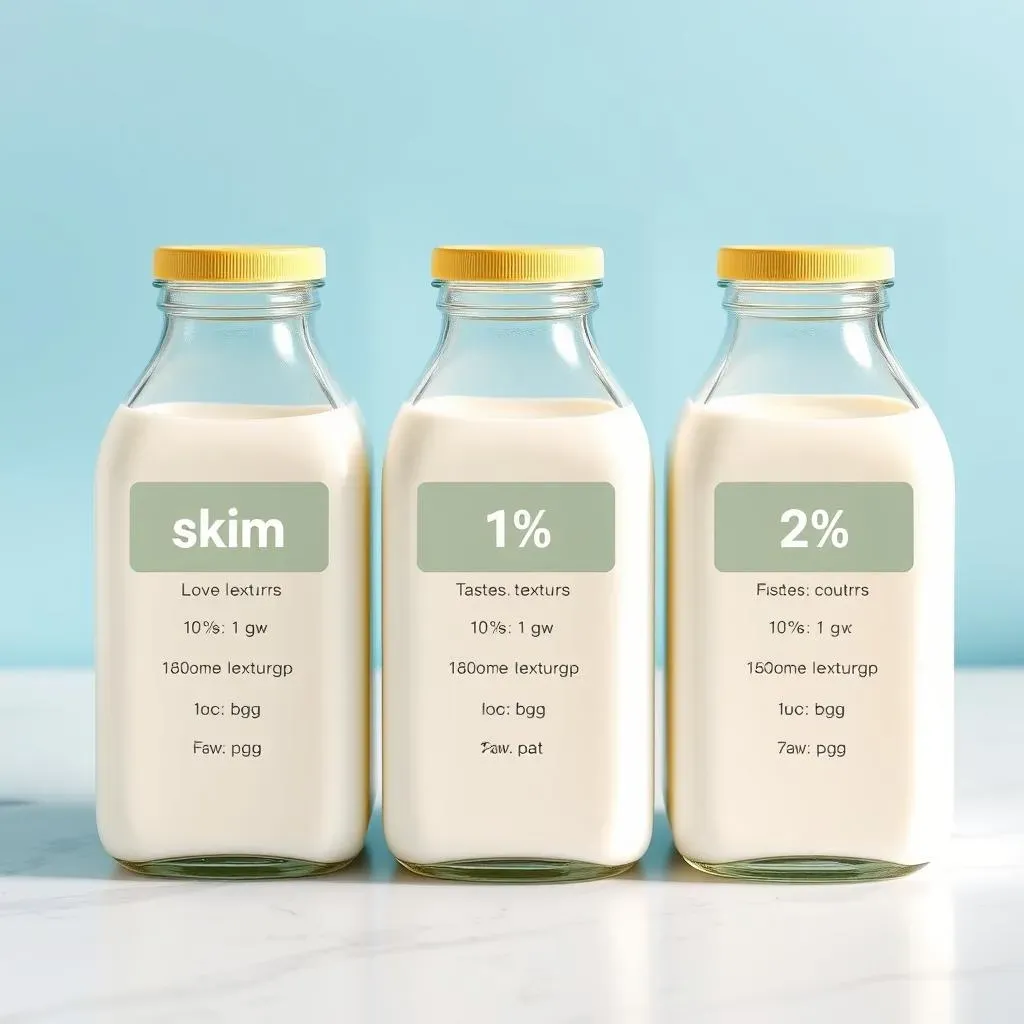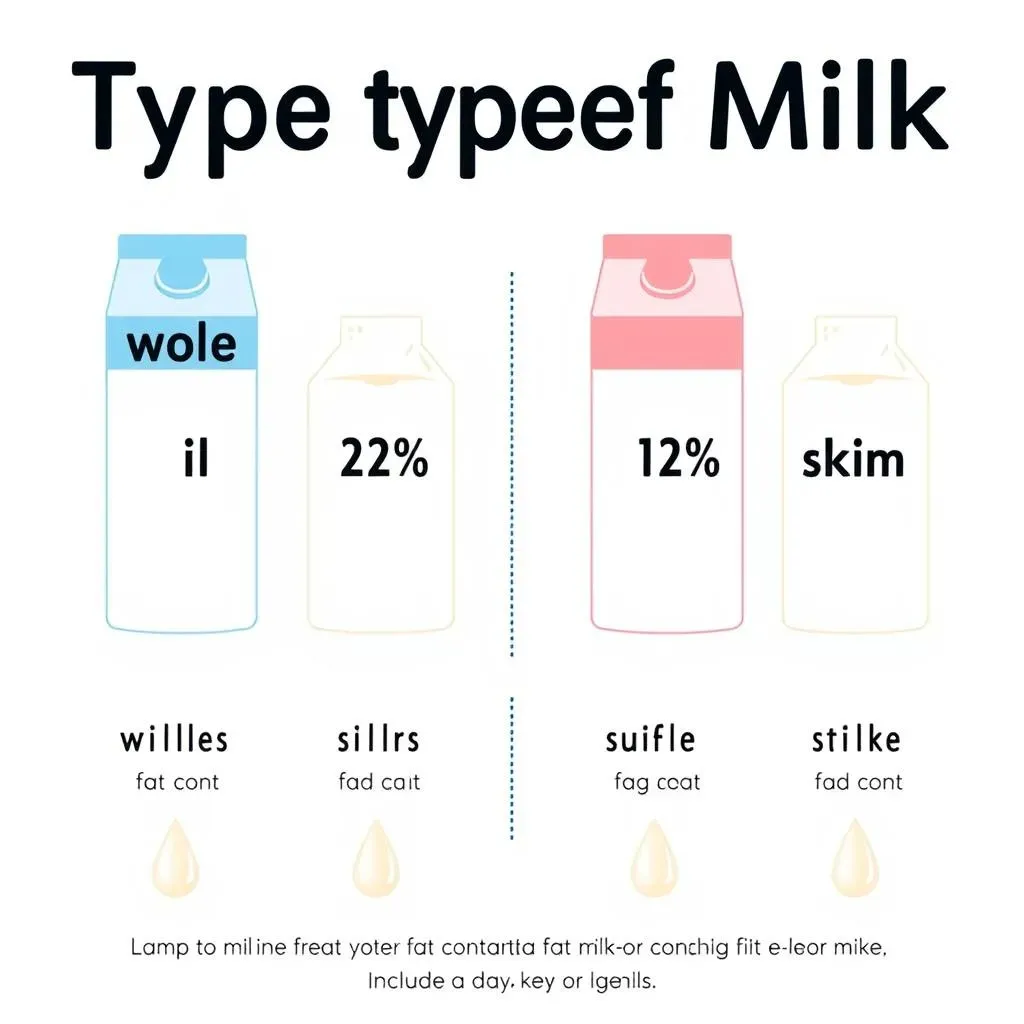Table of Contents
Walking down the dairy aisle can feel like navigating a maze. Whole, 2%, 1%, skim—it's enough to make your head spin! If you're trying to figure out which milk is low fat, you're not alone. Many of us are looking for ways to make healthier choices, and understanding milk fat percentages is a great place to start. This article will break down the different types of milk, explaining what those numbers on the carton actually mean. We'll explore the benefits of choosing low-fat options, such as skim and 1% milk, and discuss why they might be a good fit for your diet. But we won't stop there. We’ll also consider if low-fat milk is always the best choice for everyone. Whether you're watching your calorie intake, managing cholesterol, or simply curious about the differences, this guide will give you the knowledge to make informed decisions about the milk you drink. Let's get started and clear up the confusion around which milk is low fat.
Understanding Milk Fat Percentages: What Do They Really Mean?

Understanding Milk Fat Percentages: What Do They Really Mean?
Okay, so you're staring at a milk carton and wondering what those percentages mean, right? It's actually pretty simple. When we talk about milk fat percentages, we're referring to how much fat is in the milk by weight. So, if you see "whole milk" that typically means it's around 3.25% fat. That might not sound like much, but it’s the highest fat content you'll find in regular cow's milk. Now, when you go down to 2% milk, that means the fat content has been reduced to 2% of the total weight. And then you have 1% milk, which is even lower. Finally, skim milk, also called non-fat milk, has virtually no fat at all, usually less than 0.5%. Think of it like this: whole milk is like a full scoop of ice cream, 2% is a smaller scoop, 1% is a tiny scoop, and skim is like just the milk without the ice cream.
LowFat Milk Options: Skim, 1%, and 2% Milk Explained

LowFat Milk Options: Skim, 1%, and 2% Milk Explained
Skim Milk: The No-Fat Option
Let's kick things off with skim milk, also known as non-fat or fat-free milk. This is the superhero of the low-fat world, packing all the good stuff like calcium and protein but with almost none of the fat. Seriously, we're talking less than 0.5% fat. It’s made by removing nearly all the milk fat, leaving a lighter, often slightly watery texture. Some folks find it doesn't have the same creamy taste as whole milk, but it's a great choice if you want to cut back on fat and calories without sacrificing essential nutrients. Think of it as the stripped-down, efficient version of milk.
1% Milk: A Step Up in Creaminess
Next up, we have 1% milk. This option is like a middle ground between skim and 2%. It retains a bit more of the fat, which means it's slightly richer and creamier than skim. If you're not quite ready to go full-on no-fat, 1% milk might be your sweet spot. It still gives you a significant reduction in fat and calories compared to whole milk, while providing a more satisfying mouthfeel than skim. It's a nice compromise for those who want to balance health and taste. It’s like a slightly watered down version of whole milk but still packs a punch.
Milk Type | Fat Percentage | Taste & Texture |
|---|---|---|
Skim Milk | Less than 0.5% | Light, watery, less creamy |
1% Milk | Around 1% | Slightly richer than skim, still light |
2% Milk | Around 2% | Creamier than 1%, closer to whole milk |
2% Milk: The Creamy Compromise
Finally, there’s 2% milk, which is often called reduced-fat milk. It’s got a noticeable step up in fat content compared to 1% and skim, which also means it has a much creamier and richer taste. You’ll find that 2% milk is closer to whole milk in terms of texture and flavor. Many people who are trying to cut back on fat but still want a more traditional milk experience often choose this option. It’s a popular choice because it’s a good balance between taste and health. It’s like choosing a lighter version of a dessert, you still get some of the indulgence but without all the guilt.
Low Fat Milk Benefits: Why Choose It?

Low Fat Milk Benefits: Why Choose It?
Lower in Calories
Okay, so why would you reach for low-fat milk over whole milk? Well, one of the biggest reasons is the calorie count. If you're trying to manage your weight or just be mindful of your calorie intake, low-fat milk is a smart choice. Skim milk, for example, has significantly fewer calories than whole milk, yet it still provides all the essential nutrients like calcium and protein. It's like getting the same benefits but with a lighter load. Think of it as choosing a smaller slice of cake; you still get the satisfaction but with less impact on your waistline. This makes it easier to fit milk into your daily diet without overdoing it on calories.
Reduced Saturated Fat
Another major advantage of low-fat milk is its lower saturated fat content. Saturated fats, the kind found in higher amounts in whole milk, have been linked to increased cholesterol levels, which can be a risk factor for heart disease. By switching to skim or 1% milk, you're cutting down on these saturated fats. It's like choosing a bike over a car; it's better for the environment (your body) and can still get you where you need to go. This is especially important if you have a family history of heart issues or you're just trying to be proactive about your health. Every little bit helps when it comes to keeping your heart happy and healthy.
Milk Type | Approximate Calories per Cup | Approximate Saturated Fat (g) |
|---|---|---|
Whole Milk | 150 | 5 |
2% Milk | 120 | 3 |
1% Milk | 100 | 1.5 |
Skim Milk | 80 | 0 |
Is Low Fat the Best Milk for Everyone? Considering Your Needs

Is Low Fat the Best Milk for Everyone? Considering Your Needs
Okay, so we’ve talked a lot about the benefits of low-fat milk, but here's the thing: it's not a one-size-fits-all situation. While skim and 1% milk can be great for many people, they might not be the best choice for everyone. For instance, growing kids and teenagers need a certain amount of fat in their diets for proper brain development and nutrient absorption. Fat also helps you feel full, so if you're going super low-fat, you might find yourself feeling hungry sooner. It's like choosing between a fuel-efficient car and a powerful truck; both have their place depending on what you need to haul. Plus, some studies are starting to suggest that the saturated fat in dairy might not be as bad as we once thought, especially when it comes from whole foods. This means that a little more fat might not be the enemy we once believed it to be.
